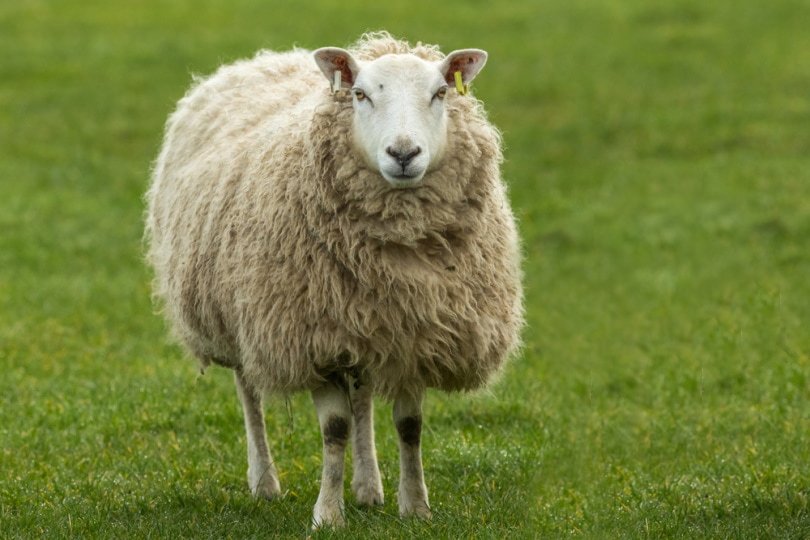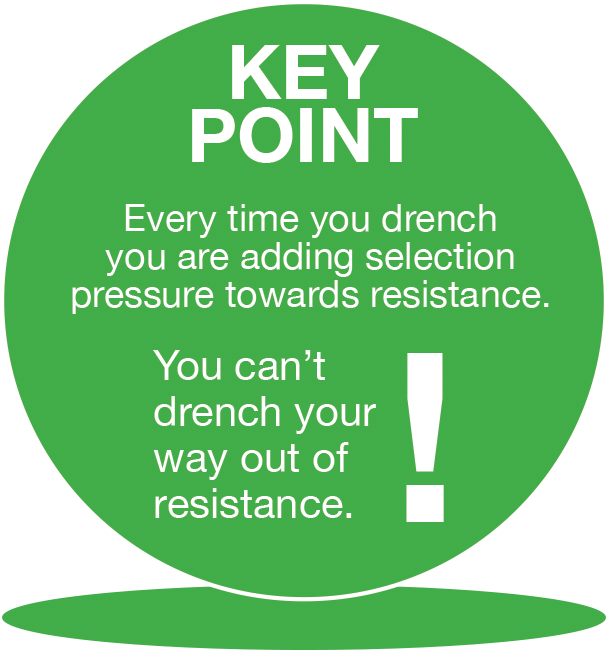Sheep Drenching Information
Sustainable worm management
Managing worm burdens is becoming one of the most challenging tasks facing owners of production animals. What you do now has a huge impact on the future as drench resistance is becoming more common. “Business as usual” is no longer an option because reliance on chemical drenches is a worm control practice that is not sustainable.
Infection with intestinal parasites costs production. Worms cause damage to the gut lining leading to inefficient feed utilisation and scouring. Most worms feed off the gut lining “robbing” the animal of nutrients and some worm types suck blood which can lead to death from blood loss. High worm burdens cause appetite suppression and increased demand on the immune system. In sheep, dirty tails from the effects of internal parasites can also lead to further problems with flystrike and downgrading of fleece.
WATCH: How to drench your sheep and goats.
Age and immunity
Youngstock provide a fertile breeding ground for multiplying worm populations and are the major source of pasture contamination. Grazing youngstock in the same area year after year will therefore contribute to higher larval challenge on pasture.
In sheep, immunity to worms is not fully developed until 18-20 months of age. Because young animals need large amounts of protein and energy to grow, they are more susceptible to the effects of parasites. The immune system is also protein and energy hungry and becomes depressed through stress.
Healthy adult animals can still become susceptible to parasites despite having a fully developed immune system, particularly around stressful events such as lambing and feed shortages.
Successful worm management strategies therefore should aim to minimise exposure at critical points of the farming calendar without selecting too strongly for resistant worms.
Seasonal pattern of larvae on pasture
Generalised seasonal pattern of infective larvae on the pasture arising from untreated sheep.
The danger periods are from spring to early winter with peak larval numbers occurring in autumn. Warmer, wet conditions allow worms to complete their lifecycle faster with fewer eggs developing over the winter months due to colder conditions.
The number of eggs and larvae on pasture is much higher than the number of worms inside animals. Simply killing worms inside the animal is only part of the overall strategy as no drench can completely eliminate the effects of larval challenge.
The lifecycle of common intestinal parasites
There are several different types of intestinal worms that infect livestock. The most important ones are roundworms with three phases in its lifecycle: egg, larva and adult. The adult stage lives in the stomach or intestines and when mature sheds eggs which pass out in the dung. An immature worm hatches out of the egg in the dung pat and then progresses through four larval stages. Some of these occur within the dung pat, whereas the third larval stage (L3) is the infective stage and can migrate out of the dung pat onto soil and grass where it can be eaten by a grazing animal.
The development of worms from egg through larval stages to maturity requires a moist environment and warm temperatures and takes about 21 days under ideal conditions. At low temperatures, development is slow, wheras development is much faster in warmer temperatures. 20-25oC is optimal to rapidly complete the lifecycle.
The vertical distribution of infective larvae on grass.
Monitor and treat
Before deciding on an appropriate drenching strategy, it is important to know what is happening on your property. Monitoring weight gains and stock condition will give a visual indication of the effects of worms.
Collecting samples of faeces to perform a faecal egg count (FEC) is the most useful guide to determine when to drench. Then conduct another FEC 7-10 days after drenching to determine the effectiveness of the drench and whether any drench resistance is developing.
Collect a fresh faecal sample, one heaped teaspoon, into a plastic pottle or freezer bag and bring this to the clinic.
MANAGEMENT OPTIONS:
Grazing Management
Well-fed ewes don’t need drenching and are net removers of larvae. Achieving target body condition (BCS) will contribute to good lamb growth rates and better immunity.
Lighter BCS ewes have higher FECs. Setup a plan from weaning to reduce the number of lighter conditioned ewes pre-winter and pre-lambing.
Monitor pasture length. Most larvae are in the bottom 2cm of pasture and grazing low increases the intake of larvae.
Reduce overstocking. The higher the stocking rate, the higher the potential worm burden.
Graze young animals ahead of older animals.
Cross graze with other species (e.g. sheep with cattle). As most parasites live in the bottom 2cm of pasture, cattle would need to graze closer to the ground to be useful as sheep worm vacuum cleaners.
Any lambs left in autumn should be moved onto crop to reduce exposure and further contamination of pasture.
If finishing lambs on pasture, ensure the pasture has been grazed by cattle for a few months prior to reduce larval contamination.
Resowing pasture after a crop can wipe out most problem parasites.
Larva can survive for many months, even years in the right conditions. Cold weather only slows development and does not kill them. Spelling pasture will reduce the level of contamination but under NZ conditions spelling for 12-24 months may be necessary to wipe out most larvae.
Aim to reduce the number of larvae consumed in the first place. Drenches will only remove the adult worms and larvae from the gut whilst the drench is active. They don’t prevent the ongoing ingestion of infective larvae which remain on pasture.
Animal Management
Maintain refugia. “Refugia” refers to part of the worm population that is able to reproduce without having been ‘screened’ as drench survivors – they are taking ‘refuge’ from the drench. Undrenched ewes are usually low egg producers and contribute susceptible worms to refugia.
Don’t drench and shift animals. Drenched animals should be returned to the same paddock they came from for a week or so.
Leave a proportion of animals un-drenched. Recommend 5-10% of heavier, well-conditioned animals to provide a refugia of susceptible worms. The main exception is late summer/early autumn when Barber’s Pole is most active or if there is a high degree of pasture contamination (i.e. successive lamb rearing on same paddocks and a dry season where animals are grazing closer to the ground).
Quit lambs early, selling pre-autumn will reduce pasture contamination and set ewes up well for mating and the next lambing season.
When buying in stock, purchase from a supplier without a drench resistance problem.
Quarantine introduced animals for 2-3 days and drench with at least 4 actives. This will require 2 drenches, twice at 24hour intervals (4 drench doses total). Then move to contaminated pasture to dilute out any multi-drench resistant survivors. DO NOT move them onto “clean” pasture – this will ensure a strong selection pressure for resistant genes. A drench check is advised using a FEC 7-10 days after quarantine drenching.
Consider introducing ram genetics with improved animal resistance to worms.
Consider bringing in ewes to pre-seed paddocks with drench-susceptible parasites.
Drenching Management
Decide when to drench next -> either use FEC’s to guide treatment (10 samples across a mob), or use animal health and growth rates to decide.
Weigh animals before drenching. Dose to the heaviest weight. Consider splitting the mobs on weight if there is variation in animal sizes.
Ensure accurate dose volume is given by measuring the drench gun delivery into a measuring container.
Administer the drench nozzle over the back of the tongue. Swallowing can trigger rumen bypass and reduce potency of the drench.
Repeating the dose 24hours after the first dose can increase effectiveness and may kill partially resistant parasites.
Monitor drench efficacy (FEC 7-10d after drenching) 1-2 times a season.
Avoid using long-acting products and capsules without careful consultation with your vet. These products can add considerable selection pressure for the development of resistance if used incorrectly.
Larval cultures can help you understand what parasites are resistant to specific drench actives and assist in developing an action plan. Do not place in the fridge.
For lamb mobs, a preventative drench strategy should typically be used consisting of 4-5 drenches given at 28 day intervals starting at weaning.
Consider targeting treatments by only selecting animals which require treatment. Animals showing visible signs of parasitism or those not meeting weight gain targets are drenched while others are left untreated.
DO NOT rely on repeated use of novel drenches (e.g. Zolvix Plus). Resistance will quickly develop.
For more information, contact your RVC veterinarian OR download the Wormwise booklet.









